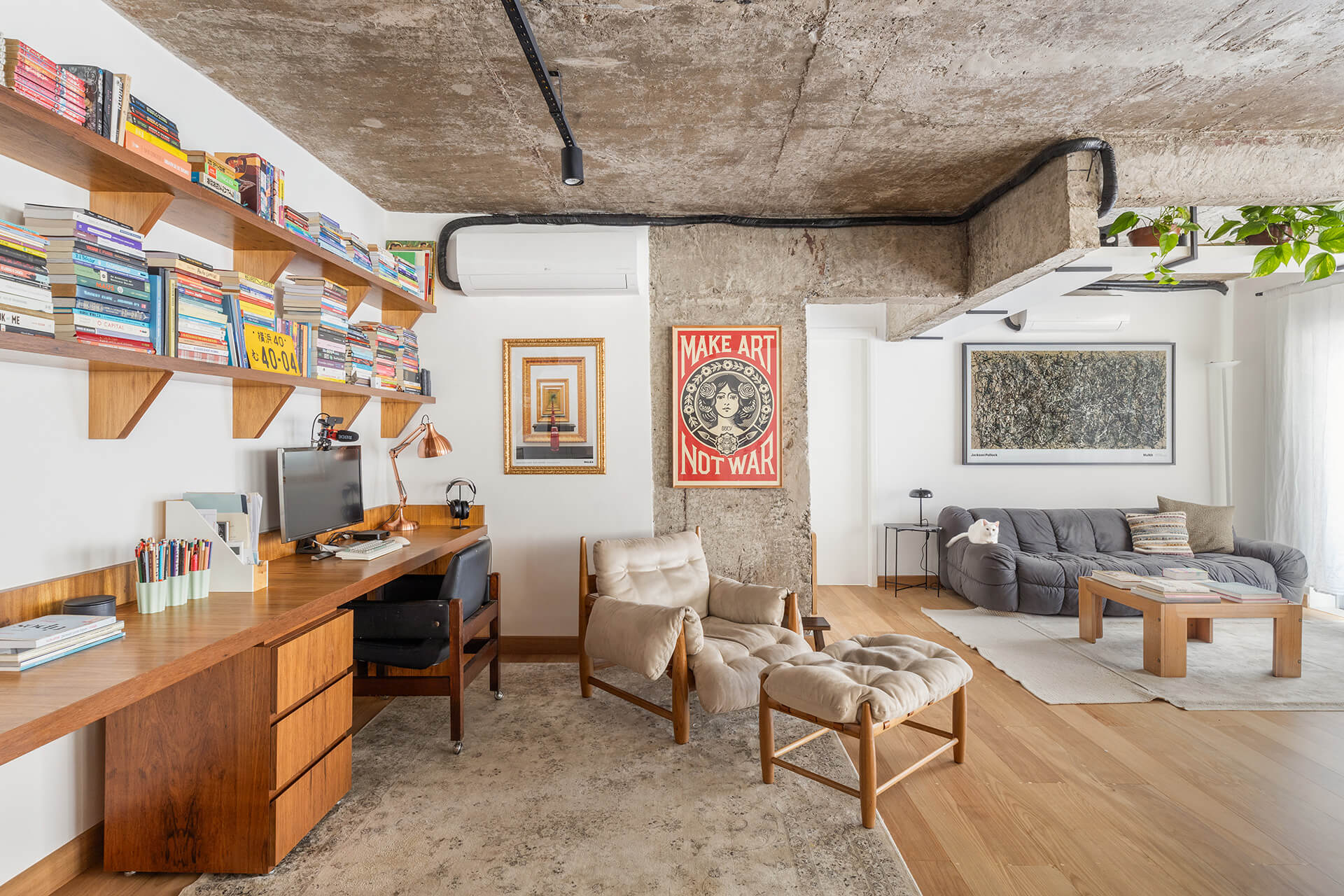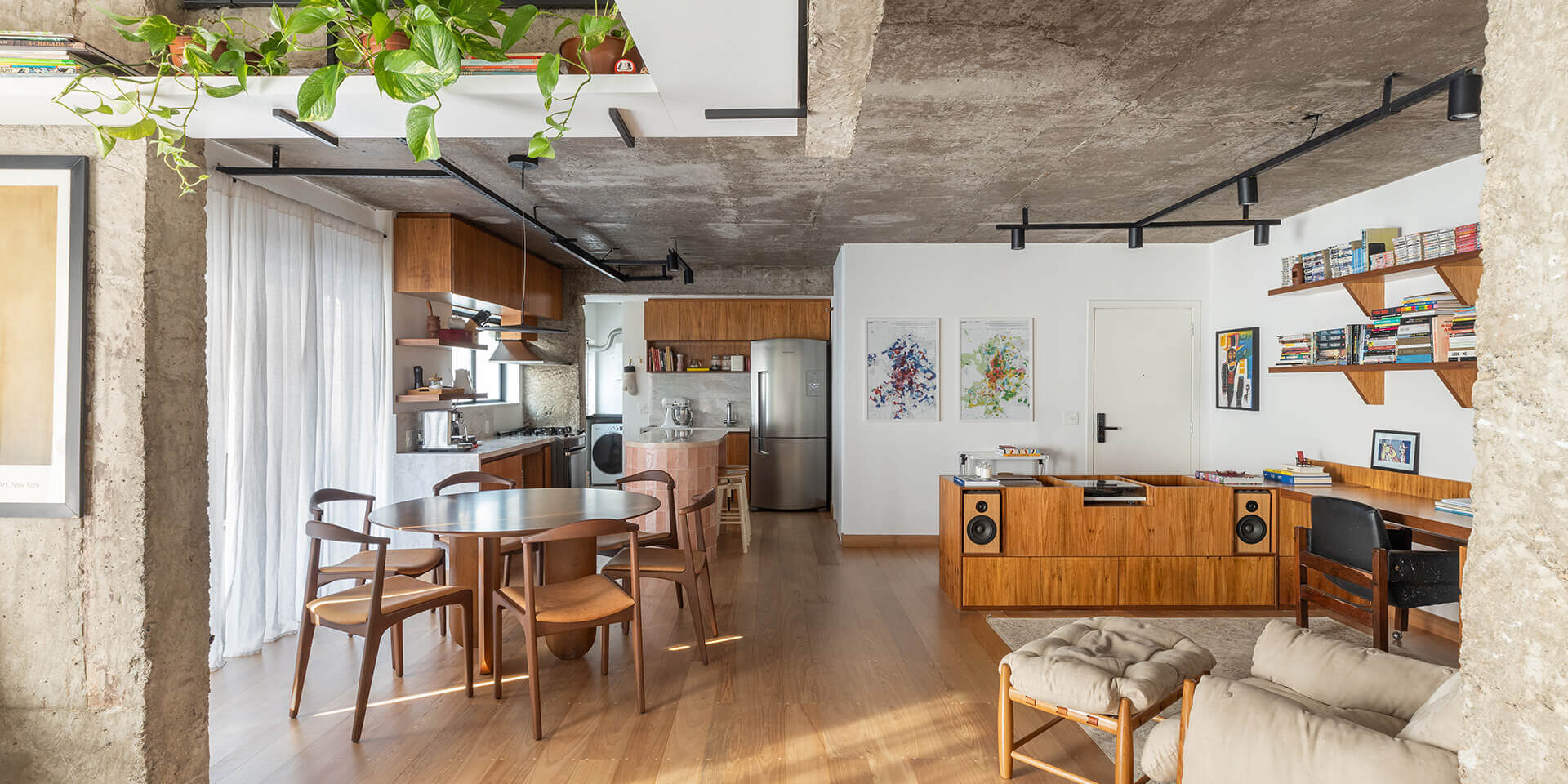Visual flow
From the very first visit to the 98m² apartment in São Paulo, the future owners felt an immediate connection to its history. The exposed concrete structure -with its visible pillars, beams, and raw-finish slabs- carried the marks of time, evoking a sense of authenticity. However, the outdated infrastructure and rigid layout called for a renovation that could preserve the apartment’s original character while meeting contemporary needs.
Design Philosophy
The central challenge was to unify the spaces, fostering a physical and visual flow that would support interaction in everyday activities. For the couple, both of whom work from home, the conventional idea of a closed-off office did not resonate. They sought an integrated, open layout that encouraged connection rather than division. The original floor plan included two bedrooms and a strict separation between the social, service, and private areas. In the renovation, nearly all interior walls were removed -except for those enclosing the powder room and main bedroom. Activity zones are now defined by cabinetry and furniture rather than structural barriers. Three core materials create the base of the design: exposed concrete, which remains visible as a tribute to the building’s history; white-painted masonry, chosen to amplify natural light from the large windows; and wooden plank flooring, which spans the entire apartment except for the bathrooms.

Custom Structures & Furniture
In the entrance, custom Freijó wood cabinetry arranged in an L-shape serves a dual purpose. On one side, it forms a workbench that organizes the home office. Above it, open shelves in the same finish, supported by French brackets, house the couple’s book collection and add a distinctive design touch. On the other side, the cabinetry holds a turntable and handmade speakers -an homage to the owners’ passion for vinyl and music, now deeply embedded in their home life.
At the far end of the apartment, the living room reflects the seamless integration of old and new. A poster brought back from New York decorates the wall, while other vintage furniture punctuate the space, blending eras and styles. To address the asymmetry revealed by the cantilevered beams after the walls were removed, metal sheet shelving was custom-designed to conceal these irregularities. The addition of houseplants on the shelving brings a touch of nature into the interior.
In the kitchen, Freijó wood cabinetry continues the visual language, offering cohesion across spaces. Marble countertops add sophistication, while a central island -rounded at the edges and clad in terracotta-colored tiles- provides a softer contrast to the apartment’s orthogonal architecture. This island also functions as a practical space for quick meals. The kitchen flows directly into the dining area, encouraging easy interaction between cooking and socializing during gatherings.

Lighting Design & Materials
Lighting throughout the apartment is achieved with electrified tracks, which illuminate the exposed concrete slabs while preserving their aesthetic integrity. In the bedroom, a neutral palette creates a serene environment conducive to rest. White walls and wooden-finish furnishings echo the warmth of the social areas, while the suite continues the same inviting tone. In the bathroom, ceramic tiles offer a gentle chromatic transition: terracotta at the base rising into white above, creating a subtle interplay of texture that continues across the countertop. A sink in the same terracotta tone, paired with a wooden cabinet, completes the harmonious design.






